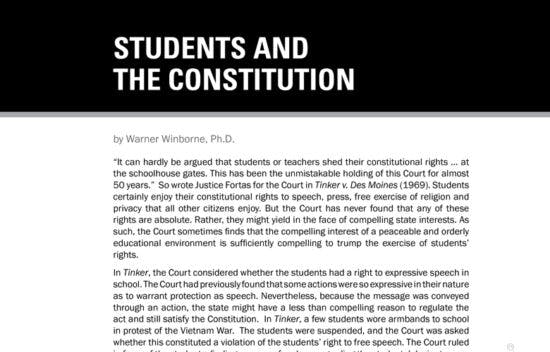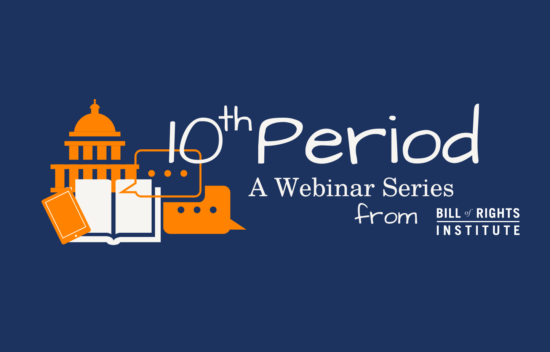



Connecting Freedom of Speech and Civil Discourse
10 items

Setting Classroom Expectations for Trust, Tolerance, and Civil Discourse
E Lesson
E Lesson
20 Min
At the beginning of the school year, it is important to set the tone for the classroom culture for the year: one that is free from hate, trusting, and tolerant. In social studies, in particular, the foundations of civil discourse are necessary structures and expectations to teach students in the first few days of school.
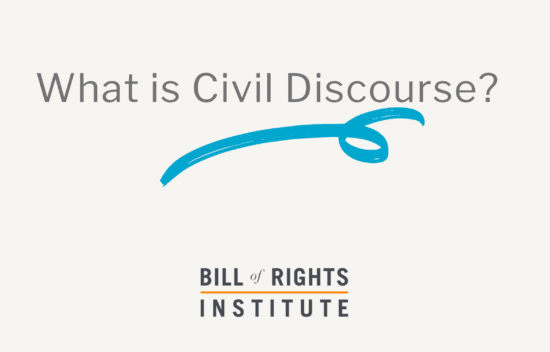
What is Civil Discourse?
Video
Video
2 Min
Watch our Constitutional Academy production on the definition and importance of civil discourse.
2 Min
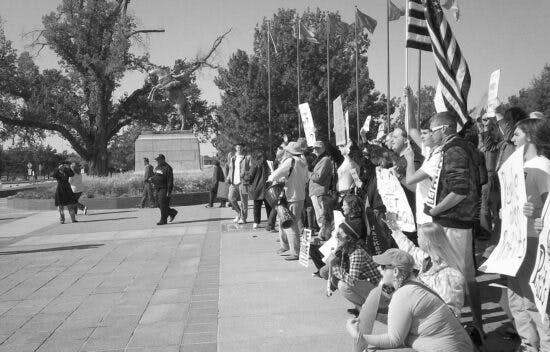
Why is Free Speech Essential to Self-Government?
Lesson - 3 Activities
Lesson
3 Activities
90 Min
America's Founders recognized the necessity of vigorous public debate and enshrined the right to speak freely in the Bill of Rights. This component of the Constitution protects a wide range of speech, including speech we might find disagreeable. While the First Amendment's primary purpose was to protect political speech, its protections do have limits. This lesson explores this essential principle of free speech.
90 Min

Debating Free Speech on Campus
E Lesson
E Lesson
20 Min
Free Speech or "Safe" Speech?
In recent weeks, college campuses around the country have experienced major student protests. These students claim that colleges promote hostile environments that harm minority students and hinder their ability to learn. To solve these problems, students have demanded that college administrators and faculty create “safe-spaces” in which offensive or disagreeable speech is prohibited and punished. These demands have sparked debate about the nature of free speech, individual rights, and higher education.

Schools, Religious Liberty & Tinker v. Des Moines | Mark Rienzi | BRI’s Constitutional Conversations
Video
Video
1 Min
Mark Rienzi, President of Becket Law discusses the importance of Tinker v. Des Moines for schools today.
1 Min
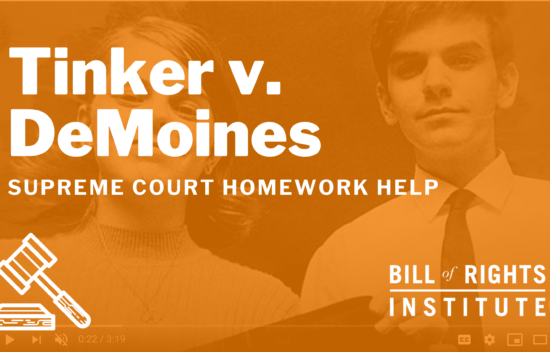
Tinker v. Des Moines | Homework Help from the Bill of Rights Institute
Video
Video
3 Min
Why did a subtle act of protest against a foreign war reach the Supreme Court? In 1965, students John and Mary Beth Tinker wore black armbands to school to protest the United States’ involvement in the Vietnam War, despite the Des Moines school district prohibiting such an act. The Tinkers sued the district for violating their First Amendment rights, and the Supreme Court ruled in their favor in a 7-2 decision. While subsequent Supreme Court rulings narrowed the scope of free expression rights at school, Tinker v. Des Moines remains a landmark case that has defined First Amendment rights for students.
3 Min

Tinker v. Des Moines Viewing Guide
E Lesson
E Lesson
20 Min
Access our Homework Help video on the Tinker v. Des Moines Supreme Court case and use the following lesson to help your students understand the material! Overview: Why did a subtle act of protest against a foreign war reach the Supreme Court? In 1965, students John and Mary Beth Tinker wore black armbands to school to protest the United States’ involvement in the Vietnam War, despite the Des Moines school district prohibiting such an act.
